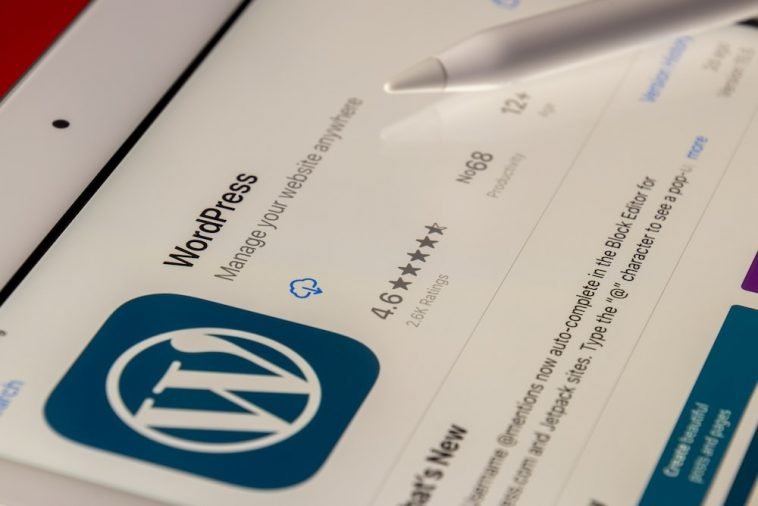Introduction.
If you have a WordPress website, you probably know that getting found on Google and other search engines is key to growing your online presence.
But, here’s the thing: just having a website isn’t enough. You need to make sure your site shows up in search results when people are looking for what you offer.
This is where SEO (Search Engine Optimization) comes into play. It’s the process of making sure your website is set up in a way that search engines, like Google, can easily understand and rank it.
Getting your SEO right is crucial if you want to drive traffic, get more visitors, and ultimately, reach your business goals. But SEO can seem confusing, especially if you’re new to it.
Luckily, WordPress is one of the easiest platforms to optimize for SEO, even if you don’t have a lot of experience. In this article, I’ll walk you through everything you need to know about doing SEO for your WordPress website.
From simple settings to advanced tricks, you’ll get a solid understanding of how SEO works and how to apply it.
Why SEO Is Important for Your WordPress Website
First, let’s talk about why SEO matters. Without SEO, your website could be buried deep in search results, where no one will ever find it.
Google alone processes over 8.5 billion searches a day, and most people don’t go beyond the first page of results. That means if your website isn’t showing up near the top, you’re missing out on a ton of potential visitors.
SEO helps your site appear higher in search results, which leads to more traffic. The more traffic you get, the more opportunities you have to convert visitors into customers, subscribers, or whatever your goals may be.
It’s a long-term strategy that pays off over time, but once you get the hang of it, it becomes easier to maintain and improve your ranking.
How Can I Do SEO For My WordPress Website?
Now that you know why SEO is important, let’s get into how to do it. I’ll break down the steps into easy-to-follow sections that anyone can do, whether you’re a beginner or someone who’s already been tinkering with SEO.
1. Choose a Good Hosting Provider.
Your website’s hosting provider plays a role in its overall performance. A fast-loading site is crucial for SEO, and a poor hosting service can slow your website down, which affects your rankings.
When choosing a hosting provider for your WordPress site, go for one that offers good speed and reliability. Some of the top options for WordPress include Bluehost, SiteGround, and WP Engine.
2. Pick an SEO-Friendly WordPress Theme.
Not all WordPress themes are built with SEO in mind. Some themes have unnecessary code or bulky elements that can slow your site down, while others don’t prioritize things like mobile optimization or proper header structure.
When selecting a theme, go for one that is lightweight and designed with SEO best practices in mind. Popular themes like Astra or GeneratePress are both SEO-friendly options.
3. Use an SEO Plugin.
WordPress plugins make optimizing your site so much easier. The most popular SEO plugin for WordPress is Yoast SEO.
With Yoast, you can easily optimize individual pages and posts, manage your sitemaps, and even add meta descriptions (the text that shows up under your website’s title in search results). Another great option is Rank Math, which offers similar features and more advanced options.
4. Optimize Your Content for Keywords
Keywords are the words or phrases people type into Google when they’re looking for something. To rank well in search results, you need to target the right keywords that match what your audience is searching for. Start by doing some basic keyword research.
You can use free tools like Google Keyword Planner or Ubersuggest to find keywords relevant to your niche.
Once you have a list of keywords, use them naturally in your content. Include them in your titles, headings, and throughout your text, but avoid keyword stuffing (using keywords too many times in an unnatural way). Google likes content that’s useful and easy to read, so make sure your content flows naturally.
5. Create High-Quality, Valuable Content
The more helpful and informative your content is, the more likely people are to share it, link to it, and spend time on your site. Google loves content that adds value, and it ranks these pages higher in search results.
Regularly updating your blog or creating detailed guides, tutorials, or product reviews can help you attract visitors who are searching for exactly what you offer.
In fact, according to HubSpot, companies that blog regularly get 55% more website visitors than those that don’t. So, make sure you’re producing content that your audience will find valuable.
6. Optimize Your Images
Images can enhance your content and make it more engaging, but if you don’t optimize them, they can slow down your site.
Compress your images before uploading them to WordPress using a tool like TinyPNG to reduce their file size without sacrificing quality.
Additionally, make sure to include descriptive alt text for each image. This helps with both SEO and accessibility.
7. Improve Website Speed
Website speed is an important ranking factor for SEO. If your site is slow, visitors might leave before it even fully loads, and Google might rank you lower. Use a caching plugin like WP Super Cache or W3 Total Cache to improve loading times.
You can also use a Content Delivery Network (CDN) like Cloudflare to speed up your site for visitors around the world.
8. Make Your Site Mobile-Friendly
More than half of all global web traffic comes from mobile devices, so your site needs to be mobile-friendly.
Luckily, most modern WordPress themes are responsive, meaning they automatically adjust to look good on mobile.
But it’s still a good idea to test your site using Google’s Mobile-Friendly Test to ensure it’s optimized for mobile users.
9. Build Backlinks
Backlinks (links from other websites to yours) are one of the most important ranking factors in Google’s algorithm.
The more high-quality backlinks you have, the more authority your site has in Google’s eyes. You can build backlinks by creating shareable content, reaching out to other websites for guest posts, or even asking for reviews or mentions.
10. Monitor Your SEO Progress
Once you’ve implemented all of the above steps, it’s important to track your progress. Use tools like Google Analytics to monitor your website’s traffic and see which pages are performing well.
You can also check your keyword rankings with tools like Ahrefs or SEMrush. This will give you a better idea of what’s working and where you might need to make improvements.
Common SEO Mistakes to Avoid
SEO is a long-term game, and it can take a while to see results. However, there are a few common mistakes that can hold back your progress. Here’s a quick rundown:
- Ignoring Technical SEO: Make sure your site is set up correctly in terms of technical aspects like site structure, URL format, and indexing.
- Not Using Analytics: If you’re not tracking your traffic or rankings, it’s hard to know if your efforts are paying off.
- Overlooking User Experience (UX): Google cares about user experience, so make sure your site is easy to navigate and offers a positive experience for visitors.
FAQs
1. How long does it take to see results from SEO?
SEO is a long-term strategy, and it can take anywhere from 3 to 6 months to see significant improvements in your rankings. But once you start gaining momentum, the results can last a long time.
2. Do I need to hire an SEO expert?
You don’t have to hire an expert if you’re just getting started. Many WordPress users successfully manage their own SEO with plugins and tutorials. But if you want to take it to the next level, working with an expert can be beneficial.
3. What’s the difference between on-page and off-page SEO?
On-page SEO refers to the things you can do on your website, like optimizing content and images. Off-page SEO refers to actions taken outside of your website, like building backlinks and social media engagement.
Conclusion
SEO is an essential part of making your WordPress website successful. By following these steps, you can improve your site’s visibility in search results, attract more visitors, and ultimately grow your business.
It takes time and effort, but it’s worth it. So, are you ready to start optimizing your website and boosting your search rankings? What’s the first step you’re going to take today to improve your site’s SEO?





GIPHY App Key not set. Please check settings